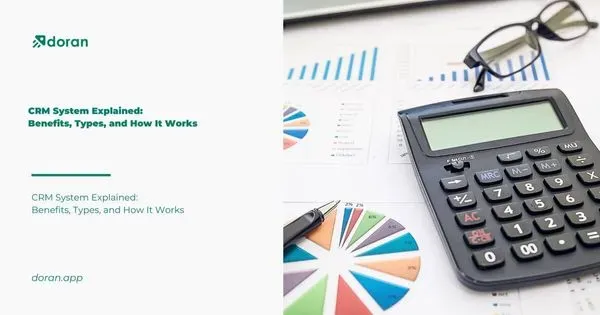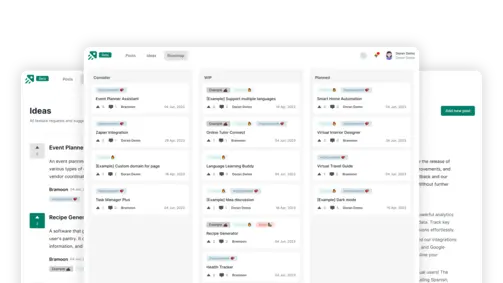Precision Planning: Building a Robust 3 Year Roadmap
Create changelog and product roadmap for your product
Explore nowTable of contents 8 min
In a competitive market, innovation is crucial to staying relevant and competitive in the long and short term. Businesses that can swiftly adjust to a changing market succeed, while those that remain stagnant fail. As a result, you cannot afford to risk the process of developing your product.
For example, you see a decline in your project management solution’s sales. After more research, you find that the absence of a mobile app, a poor user interface, and restricted software integration are the three main concerns of customers. Ideally, you should address these problems, but in what sequence? How can you stop the bleeding while giving priority to these features?
You can quickly complete the product development phase and release your next version of a product or service to the market with the help of a well-crafted 3 year roadmap. Helping teams achieve product development milestones and make informed choices also helps them align around a common vision.
However, where do you even begin?
Join us as we examine the significance of a 3 year roadmap, explain the function of 3 year roadmap software, and offer insightful instances of 3 year roadmap.
A 3 Year Roadmap: What is It?

A strategic document that outlines the high-level objectives, visions, and priorities of a product in 3 years is called a 3 year roadmap. It is a tool for communication that brings teams and stakeholders together around a single objective to speed up the process of creating perfect goods that both meet and surpass consumer expectations.
Read more: How to Collect Customer Feedback Effectively
How to Design a 3 Year Roadmap?

The steps that follow can be used to create a successful 3 year roadmap:
Developing the Strategy and Vision for the Product
The essential first step in developing an intense 3 year roadmap is understanding your business model and how your product or service will complement it. This entails being aware of your motivations for creating the product, how you plan to manage its features, and the distinct effects it will have on customers.
Specifying the Target Audience
Your target audience will determine how your product roadmap is designed. The aim behind a 3 year roadmap is to increase confidence in your way to the end goals, whether it is for development teams or management.
Selecting a Format
A well-defined structure facilitates and guides the entire roadmap creation process. Your team should establish a format and specific features based on user input and company research. For example, suppose you observe that customers value simplicity. In that case, you might wish to select a phase for enhancing the user experience.
Customizing the Metrics
When the time comes, metrics assist you in making decisions with objectivity. They are also essential for increasing stakeholder confidence in your developing goods or services. Ensure that you have chosen the appropriate metrics to guide your future steps.
Find out more: The Importance of customer feedback to SaaS Founders
6 Types of 3 Year Roadmap Examples

Because each 3 year roadmap is customized for a particular logic or to communicate an individual data set, their appearance and organization fluctuate between projects. There are two main types of product road maps: Agile and Linear.
These 6 Agile roadmaps are the most popular ones:
Now-next-later Roadmap
The goals and deadlines of a project are better communicated with the aid of this roadmap. It works well for companies that move quickly and have changing objectives. You can notify stakeholders of any roadmap changes by using now-next-later roadmaps.
“Now” refers to the current state of work. It facilitates the team’s ability to pinpoint any problem influencing the assignment and focus on its unique aspects.
The “next” is concerned with the consequences. You educate your team and other stakeholders about the product’s priorities here.
The “later” is concerned with potential future developments for the product.
As a case study, let’s say you are creating software:
-
“Now” will define your goals and objectives given the context of market validation and your research into customer preferences.
-
“Next”, you will review the principles that will direct the sales staff during the product launch.
-
“Later”, you should concentrate on any necessary software modifications. For example, a security update in the future.
Goal-oriented Roadmap
You can schedule the release of your product or service, set goals for it, and coordinate the establishment of products and services by using the goal-oriented roadmap. Put differently, the goals of your product for a specific time period are described in the goal-oriented roadmap.
For example, let’s say you are a mobile app developer looking to make an app that increases the productivity of remote workers. You may add different phases in your 3 year roadmap, like:
-
Research involves identifying your target audience’s wants and conducting market research. Interviews can be used to gather input on the features users want from the app. To find the current gaps, you can also examine the app of a rival company.
-
Planning: In this step, you’ll list the key features of the app, rank them according to user demand, and draft a development schedule. For example, you might prioritize resource allocation over particular functionality like revenue tracking.
-
Development: This could involve setting up a workspace, writing code, testing to guarantee quality, and doing frequent code reviews.
Theme-based Roadmap
Thanks to this roadmap, the product team can now group their objectives into strategic themes. Roadmaps with themes make it easier to see possible issues and estimate how long they will take to resolve. This roadmap is crucial to reduce the need for repetitive explanations and increase team effectiveness and decision-making.
For instance, if you want to develop software, you could think of three themes: better task management, teamwork, and logical reporting. Your themes could look something like this:
-
Theme 1: Better task management. The goal is to assist users in creating connections between tasks and monitoring project schedules according to urgency and priority. Research and input on current software might be gathered as part of the initiative, and opportunities for improvement could be noted.
-
Theme 2: Better teamwork. The goal is to encourage teams to work together to complete the tasks allocated to them. Initiatives might include observing for teamwork and doing team interviews.
-
Theme 3: Reasoned reporting. Customizing the project metrics and visualizations is the goal. To find and improve reporting workflows, the team could begin by looking at user feedback and set up usability research.
Feature-based Roadmap
Feature-based roadmaps monitor a product’s development and delivery with its major features. This roadmap emphasizes the development of the product features more than their final product. This roadmap highlights features that will be required in the future and shows how a product or service has evolved.
For example, let’s say you want to build an e-commerce platform to enhance user experience. You could notice characteristics like:
-
A tool for authentication that lets people sign up and register on the website.
-
A payment feature that allows customers to pay using credit cards or PayPal for the merchandise.
-
A part with ratings and reviews where users can comment on their interactions with the website.
Strategic Roadmap
A strategic roadmap lays out the goals for the product and directs the project’s overall direction. It explains the project’s what, why, and how.
For instance, teams in a mobile application development company specializing in creating user-friendly apps may utilize the strategic roadmap to outline their plans for achieving their objectives. As an example, they might:
-
Find out what the target audience wants to see by getting their opinion.
-
Examine an app currently available from a rival to see what essential features are lacking.
-
Make a scripted method, metrics, and user testing strategy.
IT Roadmap
A technology roadmap outlines the infrastructure, architecture, and development processes that make up your technology strategy for the product or service you are developing.
For instance, using the IT roadmap, you could design the following if you wanted to create project management software:
-
Putting up servers in the cloud and developing trustworthy storage solutions.
-
Enhancing key features, including progress tracking, sharing, and task creation.
-
Increasing the tool’s functionality or enhancing its current features.
As we conclude our exploration of the 3-year roadmap, remember that strategic planning is not just about reaching milestones; it’s about building a resilient future. A well-crafted 3-year roadmap empowers organizations to envision their trajectory, set realistic goals, and adapt to changes with agility. By integrating the insights from this guide, you’re equipped to not only understand the strategic value of a 3-year roadmap but also to implement one that paves the way for sustained success over the long term.
What to not miss out on our blog
Gain insightful knowledge and invaluable experiences from dedicated experts.

CRM System Explained: Benefits, Types, and How It Works
Discover everything about CRM system. Learn the benefits and how a CRM system works to improve customer relationships and streamline business operations.

Are you ready? Start your free trial today.
Enhance communication, keep track of the progress, understand customers' insight and more by taking your first trial on Doran.
Sign up for free


